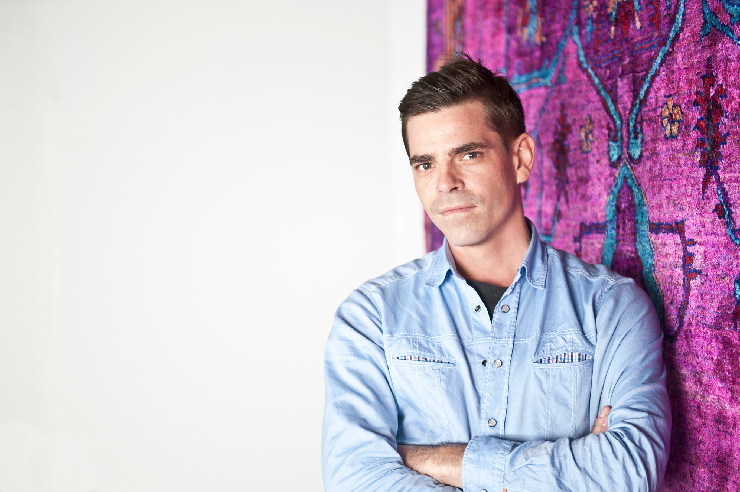WHY SLOW DESIGN MATTERS2/9/2015
‘Why ‘Slow Design Matters?’ asks FRONT Rugs on the making day at the V&A on Wednesday 23 September. Jan Kath, one of the world’s most awarded rug designers headlines this London Design Festival talk, which is followed by a workshop.
I like the sound of this debate. I think slow making does matter and it is really the new luxury. Those on stage are international rug designer Jan Kath; interior designer Jonathan Reed and Aigars Zelmenis who believes waiting six months for a rug is something to celebrate. The chair is the great journalist Helen Chislett, the founder of London Connoisseur, a conduit between designer-artist-makers and interior design professionals, private individuals and global brands.
Jan Kath
The Slow Movement epitomises a cultural shift that celebrates the art of slowing down, an antidote to our fast-paced digital lifestyles. So is this the next trend to grip our industry and if so, what impact will it have? In an age when time is such a precious commodity, slow interiors are more desirable than ever. The consumer is fascinated by the backstory and Jan Kath’s rugs have great tales to tell. These rugs highlight the passing down of skills, mastering craftsmanship, inventiveness and rediscovery of centuries-old traditions. A carpet by Jan Kath grows very slowly. Row by row, centimetre by centimetre, the pattern appears. It takes between 100 and 450 knots to complete every square inch. ‘The production time depends on the size of the rug, the number of knots, the amount of colours and the intricacy of the design. A carpet grows very slowly. Row by row, centimetre by centimetre, the pattern appears. It takes between 100 and 450 knots to complete every square inch. For an 8’ x 10’ sized rug in 100 knots/sq. inch quality, there will be 3 weavers working on it for 3 to 4 months time. Once the weaving is complete and the rug comes off loom, then the next stage can begin: the washing. This is an important process that has a major influence on the final look of a piece. It can bring out the brilliance of the colours or give them an emphatically subdued appearance. The wash is therefore responsible for deciding whether a carpet looks brand new or centuries old. In order to give pieces their final shape, they are stretched on a frame when still wet and carefully laid out to dry in the sun in inner courtyards and on the roofs of houses.’ There is even the opportunity to explore the process of Slow Making with Jan Kath in a workshop. Connecting the newest and oldest techniques he innovates with pattern and colour whilst striving for perfection using traditional production methods. It is the manual weaving, natural materials that make his designs so alive. I for one will be there – who would miss this opportunity to meet and work alongside the best rug designer in the world today? Talk/Seminar at V&A London Design Festival 10.15 - 11.30am Wednesday 23 September Workshop at V&A London Design Festival 11.30am – 2pm Wednesday 23 September www.londondesignfestival.com/events/why-slow-design-matters www.londondesignfestival.com/events/slow-making-jan-kath Comments are closed.
Categories
All
Archives
April 2020
|


